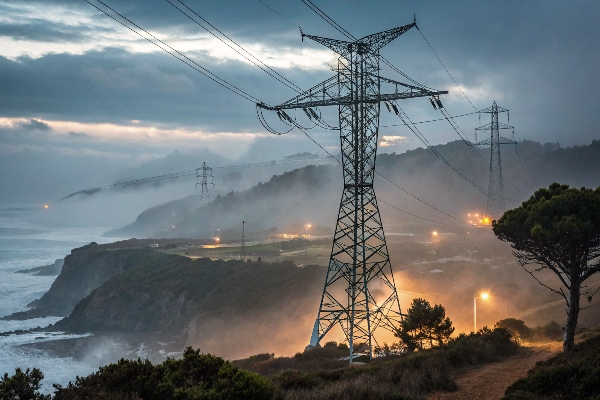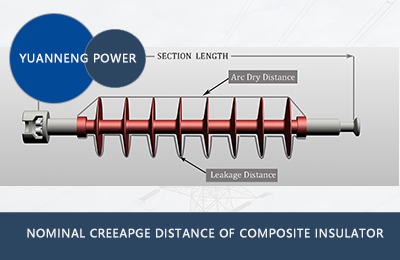in the intricate landscape of electrical infrastructure, where reliability and safety reign supreme, medium voltage disconnect switches stand as critical guardians of our power systems.These unassuming yet essential devices play a pivotal role in ensuring the seamless operation of electrical networks, often operating silently behind the scenes. this article delves into the world of medium voltage disconnect switches, unraveling their meaning, functionality, and the technical aspects that underscore their importance in modern energy systems. Whether you’re an industry professional, an engineer, or simply curious about electrical installations, understanding these switches can illuminate the path to safer and more efficient electrical management. Join us as we explore the fundamentals of medium voltage disconnect switches and their impact on the infrastructure that powers our daily lives.
Table of Contents
- Exploring the Functionality of Medium Voltage Disconnect Switches
- Key Components and Design Considerations for Optimal Performance
- Safety Protocols and Best Practices for Installation and Maintenance
- Future Trends in Medium Voltage Disconnect Technology and Innovation
- Q&A
- Key Takeaways
Exploring the Functionality of Medium Voltage Disconnect Switches
Medium voltage disconnect switches play a vital role in ensuring the safe and efficient operation of electrical systems. These devices are designed to isolate electrical equipment, providing a crucial layer of protection during maintenance and service operations. The functionality of these switches is characterized by several key features:
- reliability: Designed to endure harsh electrical and environmental conditions.
- Ease of Use: User-friendly mechanisms that allow for simple operation.
- Robustness: Capable of handling high current applications with minimal wear.
- Safety: Minimizes risk by providing clear visual indications of switch status.
These switches are also essential in preventing electrical failures, and they often come equipped with advanced design aspects including:
| Feature | Description |
|---|---|
| Insulation Resistance | Ensures minimal leakage currents for enhanced safety. |
| Position Indication | Visual cues for open or closed positions to aid in safety. |
| Current Rating | Available in various ratings to suit diverse applications. |
With their ability to facilitate maintenance operations while enhancing system safety, medium voltage disconnect switches are invaluable assets in electrical installations.Their applications span across various sectors, from industrial plants to commercial buildings, demonstrating flexibility and adaptability in fulfilling specific isolation needs.
Key Components and Design Considerations for Optimal Performance
When designing medium voltage disconnect switches, several critical components ensure safety and efficiency in operation. Key elements such as the switch mechanism, insulation system, and operating handle play a vital role. The switch mechanism must provide reliable performance under various electrical loads while being robust enough to withstand environmental conditions. The insulation system shoudl be designed for optimal dielectric strength, preventing electrical breakdowns and ensuring the safety of both equipment and personnel. Additionally, the operating handle must be ergonomically designed for ease of use, allowing for rapid manual operation when necessary.
Another essential aspect of design considerations involves assessing the switch location and maintenance requirements. Proper placement can substantially affect accessibility and safety, ensuring that the switch can be operated quickly in emergency situations. Regular maintenance is critical to prolonging the life of the switch and preventing unexpected failures.to facilitate this, manufacturers frequently enough include features such as removable covers for easy access to internal components and indicator lights to signal operational status. Below is a simple table summarizing these design components:
| Component | Function |
|---|---|
| Switch Mechanism | Ensures reliable operation under varied electrical loads |
| Insulation System | Prevents electrical breakdowns, ensuring safety |
| Operating Handle | Allows for quick and easy manual operation |
| Switch Location | Affects accessibility and emergency operation |
| Maintenance Features | Facilitates easy access for routine checks and repairs |
Safety Protocols and Best Practices for Installation and Maintenance
Ensuring safety during the installation and maintenance of medium voltage disconnect switches is paramount. Proper protocols must be adhered to in order to prevent accidents or electrical hazards. key practices include:
- Verification of power Status: Always verify that the circuit is de-energized before starting any installation or maintenance work.
- Use of PPE: Personal protective equipment, such as gloves, helmets, and insulated tools, should be used to reduce risks.
- Lockout/Tagout Procedures: Implement and follow lockout/tagout protocols to control hazardous energy during service.
Moreover, regular training and clear interaction are vital in minimizing risk. Technicians should engage in ongoing education regarding the latest industry standards and technologies. additionally,maintaining detailed documentation can help streamline operations and enhance safety. Consider the following best practices:
- Scheduled Maintenance Checks: Routine inspections should be conducted to ensure all components are functioning correctly.
- Thorough Documentation: Keep records of all maintenance activities, including any issues encountered and resolutions implemented.
- Emergency Procedures: Establish and review emergency preparedness protocols to ensure all team members can respond effectively in case of an incident.
Future Trends in Medium Voltage Disconnect Technology and Innovation
The landscape of medium voltage disconnect technology is evolving rapidly, driven by advancements in materials, digitalization, and enhanced safety protocols. Smart disconnect switches are emerging, equipped with IoT capabilities that allow for real-time monitoring and control.This evolution enables operators to gain insights into the performance and condition of their disconnect systems, leading to reduced downtime and improved reliability. Other trends include the integration of renewable energy sources, which require more sophisticated disconnect solutions to handle the variable nature of energy generation and distribution.
Innovations in insulation and arc suppression materials are also playing a pivotal role in shaping future designs. the development of environmentally friendly substances not only meets regulatory demands but also enhances overall system performance by reducing environmental impact. Furthermore, automation in switchgear assembly and operation is gaining traction, facilitating quicker responses to system failures and minimizing human error. as these technologies advance, a focus on user-friendly interfaces and enhanced training tools will ensure that operators can seamlessly adapt and maximize the benefits of next-generation disconnect switches.
Q&A
Q: What are medium voltage disconnect switches, and why are they critically important?
A: medium voltage disconnect switches are critical electrical devices that allow operators to safely isolate sections of electrical infrastructure for maintenance or safety purposes. Typically operating within a voltage range of 1 kV to 38 kV, these switches ensure that circuits can be de-energized effectively, preventing accidental energization while maintenance work is being performed. Their importance lies in enhancing safety, protecting equipment, and maintaining system reliability.
Q: How do medium voltage disconnect switches differ from other types of switches?
A: Medium voltage disconnect switches primarily differentiate themselves from low and high voltage switches by their operational voltage range and construction. Unlike low voltage switches,which often handle residential and light commercial applications,medium voltage switches are designed for industrial and utility settings,where higher voltages are present. Additionally, their construction often includes robust materials capable of withstanding harsher environmental conditions and more important electrical loads.
Q: What applications typically utilize medium voltage disconnect switches?
A: These switches find application in various settings, including electrical substations, wind farms, solar energy installations, and industrial manufacturing plants. they serve critical roles in power distribution systems, connecting and disconnecting power sources, protecting equipment, and contributing to effective load management.
Q: What key features should one look for when selecting a medium voltage disconnect switch?
A: When selecting a medium voltage disconnect switch, consider features such as the switch's insulation type (air or gas-insulated), operating mechanism (manual or motorized), and mechanical design (visible break versus non-visible break). Other critical factors include the switch's voltage rating, current capacity, and environmental ratings, which gauge its suitability for specific conditions, such as extreme weather.
Q: What are the safety considerations associated with using medium voltage disconnect switches?
A: Safety is paramount when working with medium voltage disconnect switches. Operators should ensure that proper personal protective equipment (PPE) is worn and that lockout/tagout (LOTO) procedures are followed during maintenance. Additionally, regular inspections and testing should be conducted to ensure that the switches operate correctly and that there are no signs of wear or damage.
Q: How do maintenance practices impact the life of a medium voltage disconnect switch?
A: Regular maintenance practices greatly influence the lifespan and performance of medium voltage disconnect switches.Scheduled inspections help identify potential issues before they escalate, ensuring that connections remain secure, and any wear is addressed promptly. Routine cleaning and lubrication of moving parts can also enhance functionality and prevent malfunctions, ultimately leading to a longer service life and reduced operational costs.
Q: What advancements are being made in the technology of medium voltage disconnect switches?
A: Recent advancements include the development of smart disconnect switches that incorporate IoT technology,allowing real-time monitoring and data analytics. These innovations facilitate predictive maintenance and enhanced operational efficiency. Additionally, advancements in materials and designs, such as the incorporation of eco-friendly insulation materials, support sustainability while improving performance and safety.
Q: Where can readers learn more about medium voltage disconnect switches?
A: Readers interested in delving deeper into the topic can explore resources such as industry publications, manufacturer websites, and standards organizations like the Institute of Electrical and Electronics Engineers (IEEE). Additionally, attending industry conferences and workshops can provide practical insights and opportunities for engagement with experts in the field.
Key Takeaways
as we unravel the complexities behind medium voltage disconnect switches, it becomes clear that these critical components are more than just safety devices; they are essential players in the seamless operation of electrical systems.By understanding their function, design, and the role they play in ensuring reliability and safety in electrical networks, we empower ourselves to make informed decisions in their application and maintenance. As technology continues to evolve, so too will the innovations surrounding medium voltage equipment, underscoring the importance of staying informed. Whether you’re an engineer, technician, or simply curious about the intricacies of electrical systems, a firm grasp of disconnect switches paves the way for enhanced performance and safety in your projects. Keep this knowledge close as we pave the way for a more connected and secure future.




